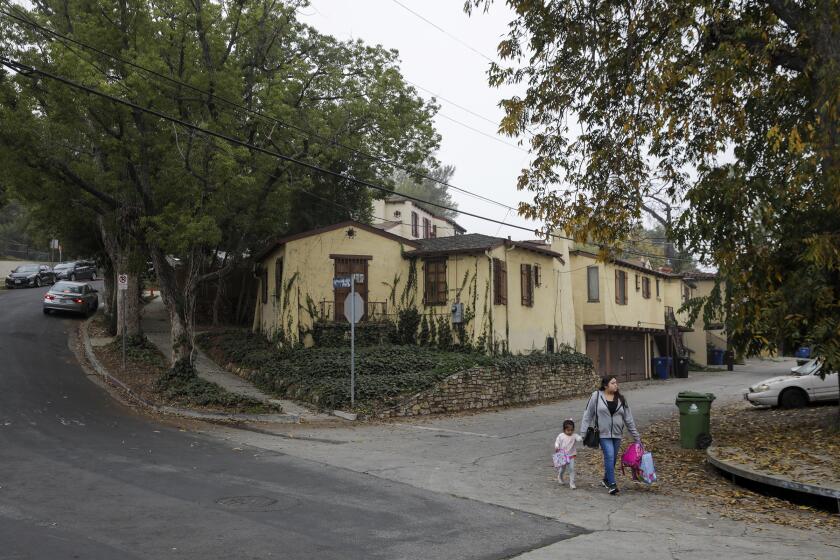Opinion: Minimum wage naysayers, wrong about past increases, are wrong about L.A. too
- Share via
Los Angeles made national news last week when it became the largest American city to pass a substantial increase to the minimum wage, rising to $15 per hour by 2020.
As usual when this topic comes up, business organizations and their allied groups argue that employers will go out of business, lay off workers and/or cut hours because they can’t afford to pay more for labor.
“Starter jobs” — teens bagging groceries, if those gigs still exist — will vanish, they say, making it harder for young people to gain valuable workplace experience. Los Angeles, they fret, will lose jobs as employers flee the city, plunging former minimum-wage workers into poverty.
Theirs is an interesting line of argument, not least because it’s of the “I know better than you what’s good for you” variety. Workers who are marching in the streets for a better wage, they’re saying, don’t realize that their demands -- greed, even -- will kill the goose that lays the minimum wage egg.
The minimum wage debate is like the one about climate change: It’s between those who are right, and those who have repeatedly been proved dead wrong, yet still refuse to concede.
Minimum wage as starter salary? Nonsense. The average age of a minimum wage worker in the United States is about 35, and 88% are over 20 years old, according to a 2013 study by the Economic Policy Institute. The EPI also found that 55% are full-time workers, and 28% have children. Job flight? If it was going to happen anywhere, you would have expected it to happen in the tiny airport municipality of SeaTac, Wash., which in 2013 raised its minimum wage to $15 all at once. A year later, city officials say they saw little impact on the overall local economy. In 2014, Seattle followed suit, but with the $15 minimum wage phased in over several years. So far, the sky has not fallen.
At first glance, $15 in L.A. seems like a big increase from the current $9 state minimum. But that’s theoretical.
In reality, low-wage L.A. restaurant workers — the industry most analyzed when studies of low-wage workers are conducted — typically earn about $12 an hour.
Nate Silver’s 538 blog calculates: “Assuming inflation holds more or less steady, $15 an hour in 2020 will be worth the equivalent of about $13.75 today.” It also notes that Los Angeles is an expensive place to live: “It costs workers about 40% more to live in Los Angeles than in the average American community. That means that $15 in LA is the equivalent of less than $11 in the U.S. overall.”
True, the L.A. City Council inserted an annual automatic cost-of-living increase, beginning in 2022. So if the official inflation rate goes up, say, 3% between 2022 and 2023, the wage goes from $15 to $15.45, and so on. But the consumer price index used as a barometer of inflation is, to be polite, hogwash. The real increase to the cost of goods and services rises much faster than the official rate. The current official rate is close to zero. However, the economics blog Shadow Government Statistics uses a different method of calculating and says it’s more like 3.75%. In that case, minimum wage workers would still lose ground to inflation after the COLA hikes start in 2022.
There is no evidence, other than lame anecdotes, that increases in the minimum wage cause legions of employers to go under or lay off workers.
Follow the Opinion section on Twitter @latimesopinion and Facebook
More to Read
A cure for the common opinion
Get thought-provoking perspectives with our weekly newsletter.
You may occasionally receive promotional content from the Los Angeles Times.










